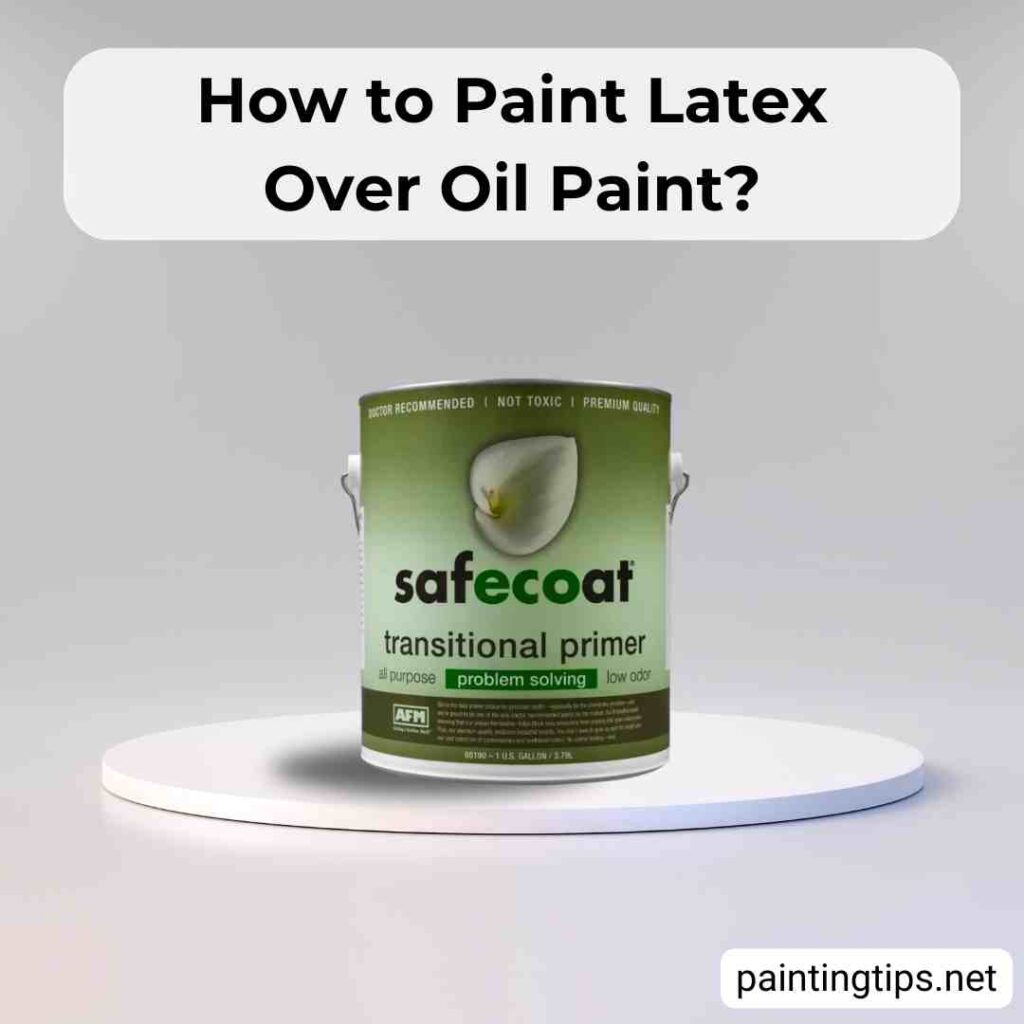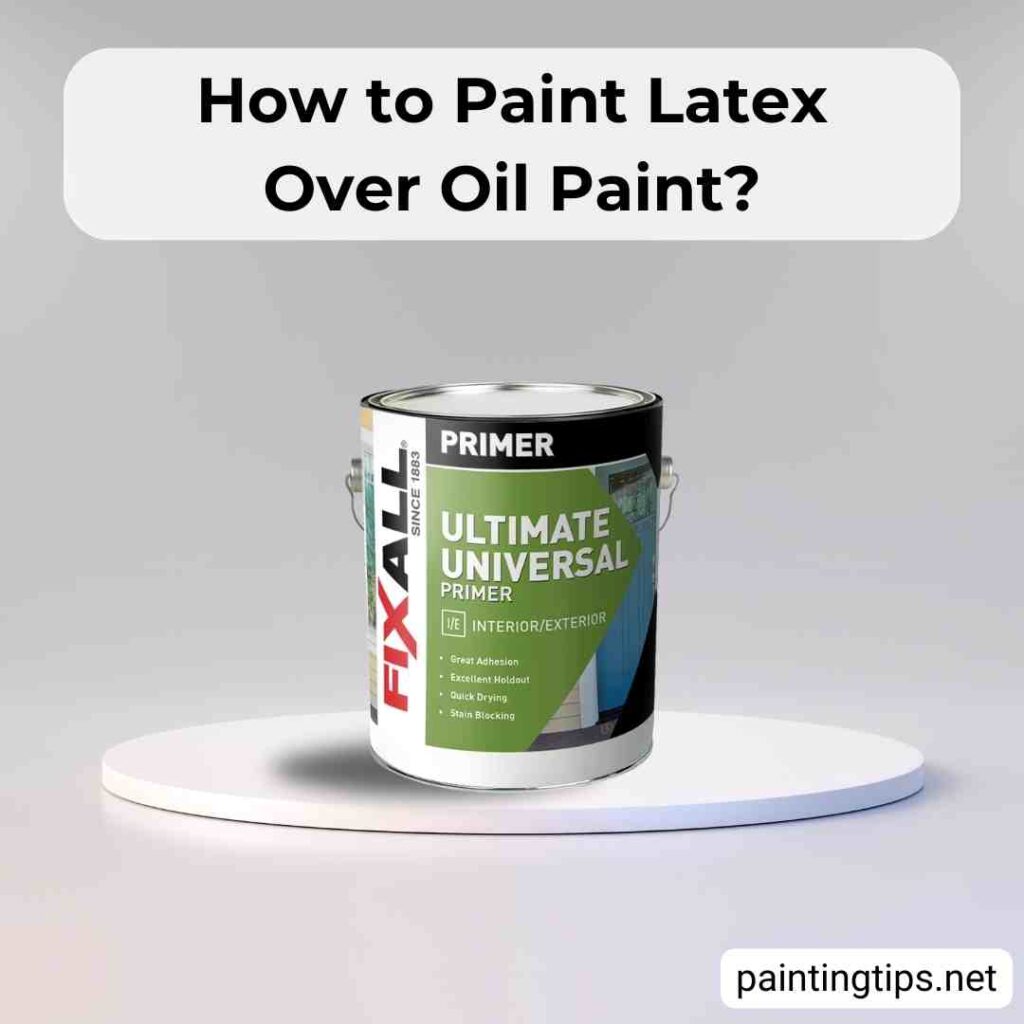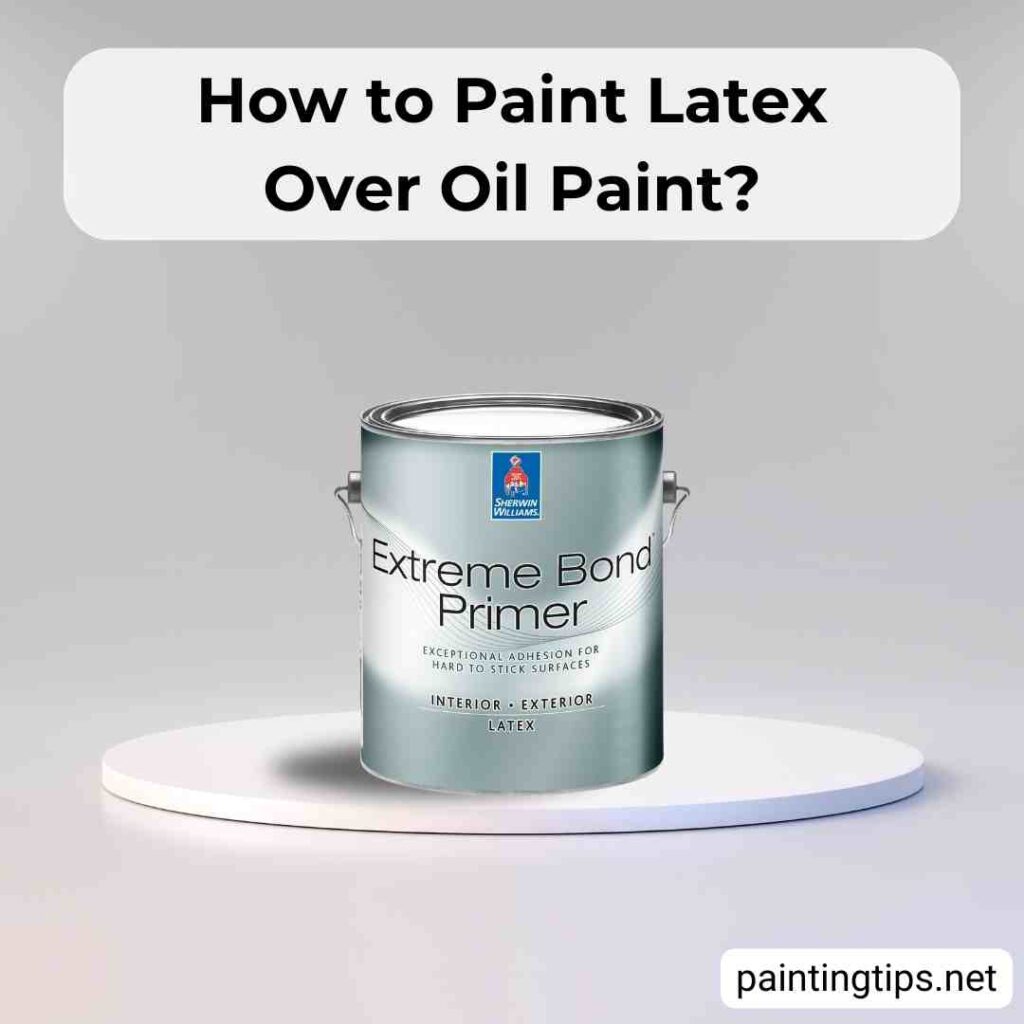Thinking about applying latex paint over oil-based surfaces but unsure how to begin? Painting latex over oil-based surfaces is possible, but it requires the right preparation. Without proper surface prep, latex paint may not stick well and can peel off quickly. In this guide, we’ll explain whether you can use latex paint over oil-based paint and show you step-by-step how to do it correctly using sanding methods and primers like bonding primer, transition primer, or universal primer. With the right approach, you can achieve a smooth, durable, and long-lasting finish.
How to Paint Latex Over Oil Paint?

To apply latex paint over oil-based paint, you can either lightly sand the surface or use a bonding primer—both easy options for a great finish. Oil-based paints often create a glossy, smooth surface once dry, which can prevent latex paint from bonding properly. That’s why it’s important to properly prep the surface before applying latex paint over oil-based paint.
To improve adhesion, you can either gently sand the surface to reduce its shine and add texture, or apply a bonding primer designed to adhere to glossy or oil-based surfaces. In some cases, a combination of both — light sanding followed by a bonding primer — provides the best results. Skipping these steps may cause the latex paint to peel or chip off over time. Thorough surface preparation guarantees durable and polished results, ensuring latex paint adheres effectively.
Can You Put Latex Paint Over Oil Paint?
Avoid applying latex paint directly on oil-based paint, as it will cause the latex to peel off quickly. To apply latex paint over oil-based paint, you need to at least sand the surface lightly to make it slightly rough.
How to Paint Latex Paint Over Oil Based Paint?
Here are the correct primers and sanding methods you can use to latex paint over oil-based paint.
1-Transition Primer

One of the easiest ways to apply latex paint over oil-based paint is by using transition primer.Like latex paint, transition primer is water-based and odorless. It serves as a surface prep primer, enabling effective adhesion of latex paint on a variety of surfaces.
Transition primer improves adhesion on slick, glossy surfaces like tile, glass, or oil-based paint. Once it’s applied, you can safely follow up with a coat of latex paint. However, it may not be available in your area, so we’d like to explain some other alternatives below.
2-Universal Primer

Universal primer is a multipurpose primer. The formulation of universal primers varies by brand—they may be water-based or resin-based. These primers help the paint stick better to all kinds of surfaces. When preparing to apply latex paint over oil-based paint, using a universal primer is a practical option. For best results, lightly scuff the oil-painted surface before priming to improve bonding.
3-Bonding Primer

A bonding primer or adhesion primer is designed to help paint adhere to smooth, non-porous surfaces like glossy paint, tile, glass, or metal. It forms a durable link between the existing surface and the new layer of paint, helping to prevent issues like flaking or peeling.
Before you go ahead with latex paint, start by applying a bonding primer over the oil-based surface. Once fully dry, the primer creates a solid foundation that helps the latex paint grip effectively and last longer. Make sure to follow the manufacturer’s drying time recommendations for the best results.
4-Completely Sanding

A highly effective method for applying latex paint over oil-based surfaces is to fully remove the existing paint through thorough sanding. However, this process is time-consuming and labor-intensive. You can shorten this process a bit by using a sanding machine.
5-Surface Sanding

It is possible to paint latex and water-based paint on oil based paint by superficial sanding. Use 180 to 220 grit sandpaper to gently roughen the oil-based paint surface, creating a better texture for the new paint to adhere to. Next, just wipe away the dust with a damp cloth. Apply a general-purpose primer and let it dry for 4 hours. Then, apply latex paint to the wall.
Warnings and Precautions
- Getting a smooth and durable finish with latex paint over oil-based surfaces starts with thorough surface preparation. Priming is essential because latex paint alone may not adhere well to the glossy and smooth surface of oil-based paints. Skipping primer increases the risk of the latex paint cracking, peeling, or failing to hold up over time.
- Lightly scuffing the surface before applying primer adds texture, allowing the primer to grip the surface more effectively.
- Choose the right primer: A bonding primer or transition primer is highly recommended as they are specifically designed to bond with glossy surfaces like oil-based paint.
- Make sure the primer is fully dry before applying latex paint to ensure even coverage and prevent peeling issues.
- Be cautious of high humidity or extreme temperatures while painting, as this can affect both primer and paint adhesion. “Related article: How to paint over oil based paint.”